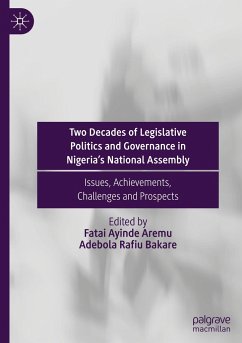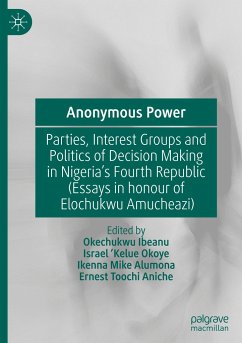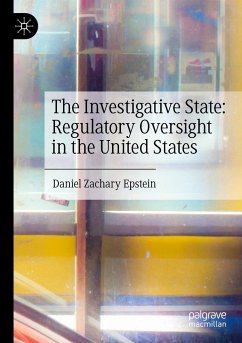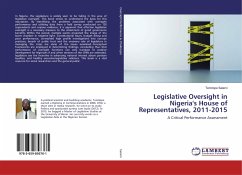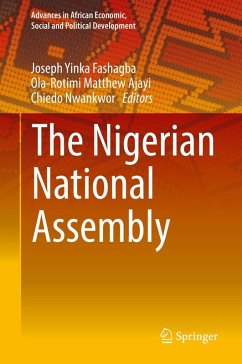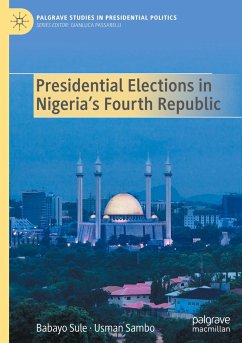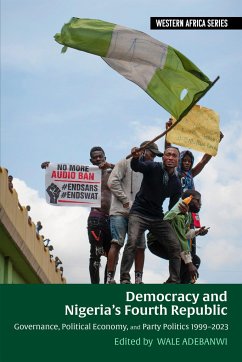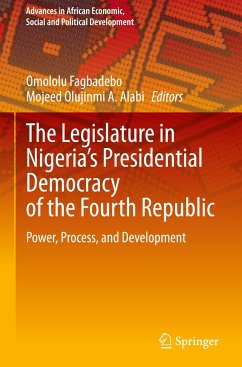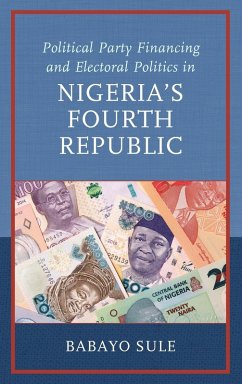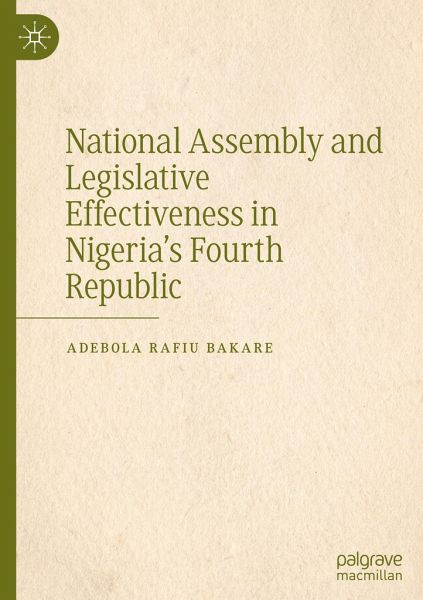
National Assembly and Legislative Effectiveness in Nigeria's Fourth Republic

PAYBACK Punkte
46 °P sammeln!
This book evaluates the legislative effectiveness of Nigeria's National Assembly under the Fourth Republic. The assessment covers five Assemblies (4th-8th) and focuses specifically on lawmaking, cost of running the National Assembly, and the budget making process. It empirically assesses the effectiveness of the Nigerian national legislature beyond previous emotional and sentimental evaluations of the institution. It has developed a model 'Institutional Legislative Effectiveness Score' used in assessing the institutional performance of the National Assembly from two perspectives: first, by com...
This book evaluates the legislative effectiveness of Nigeria's National Assembly under the Fourth Republic. The assessment covers five Assemblies (4th-8th) and focuses specifically on lawmaking, cost of running the National Assembly, and the budget making process. It empirically assesses the effectiveness of the Nigerian national legislature beyond previous emotional and sentimental evaluations of the institution. It has developed a model 'Institutional Legislative Effectiveness Score' used in assessing the institutional performance of the National Assembly from two perspectives: first, by comparing the performances of the two chambers in the same Assembly; and second, by comparing the performances of the institution across Assemblies. Aside lawmaking, the book also covers the major topical issues that characterized public evaluation of the institution. These include: size of the institution, budgeting process, cost of funding the institution, and the debate on the appropriate way in reforming the National Assembly.





